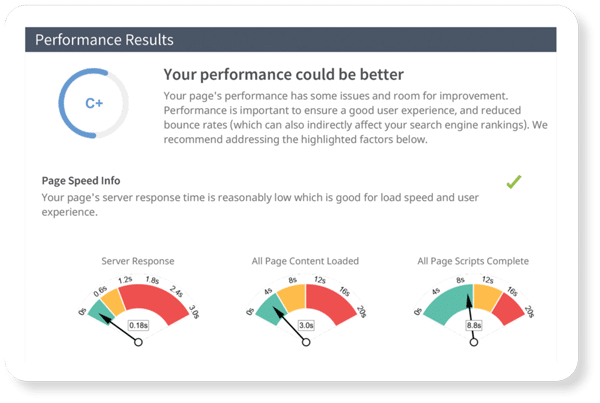Designing your website means pinpointing the needs of your potential client-base. Why are people coming to your site? What need are you fulfilling? And how can you facilitate that need’s fulfillment?
This process is sometimes overridden by a desire to build a sleek site with tons of cool features that offer aesthetic value, pleasurable images and very little functionality. If you overload a user with tons of menus and moving parts, you may lose a potential client who is in search of sober legal advice simply because he can’t navigate to the correct page.
A person might visit, say, mashable.com, looking for sense-saturation and outrageous content, but that doesn’t mean they scour the internet solely in search of thrills. The web is also a sphere of public utility, a place where people can go to find trustworthy resources for real-world problems.
Form Follows Function
To that end, your law firm’s website needs – and this is the main point of this post – to prioritize functionality over form. Put another way, “form ever follows function,” to use a tired maxim of modernist architects. That being said, to be true to Louis Sullivan’s now famous phrase, you needn’t throw form out the window:
“Yet to the steadfast eye of one standing upon the shore of things, […] the heart is ever gladdened by the beauty, the exquisite spontaneity, with which life seeks and takes on its forms in an accord perfectly responsive to its needs,” wrote Sullivan in a bite of purple prose.
The take away: focus on your users’ needs, not on your idea of what a cool website looks like.
How?
There are a number of general principles to keep in mind when designing your website. Specifically, it might be a good idea to maximize space on your site, thereby reducing clutter. When a page is overwhelmed with text and images, a user can feel overwhelmed, especially if he or she is looking for easy-to-find legal information.
Pencil and Paper
This might mean getting rid of the side bar, which may not work well in a mobile browser anyway. To that end, as you plan your site, it might be a good idea to use pencil and paper, as this can help you prioritize the necessary elements and give you a sense of spatial relationships. Ultimately, it might help simplify your website.
Mobile-Friendly
Additionally, your site should be optimized to respond to the preferences of your users. And when it comes to user experience, few things are more important than mobile-friendliness.
Making your website responsive and mobile friendly is a bit more complicated than perhaps it once was. But you might want to look into it, even if it costs a bit more money. Not only can it satisfy your users’ needs; it can also improve your ranking signal.
More and more searches are performed on mobile devices. In fact many consumers only use mobile to search the web. Even those that have access to both mobile and desktop browsers may choose to use their mobile device when looking to hire a lawyer. For example, your potential client might be searching for legal advice while at work and not want to alert her employer, so giving her the option of using her phone could be a boon to your firm.
Less is More
As you seek out advice, remember to pick and choose those tips that help you advance the functionality of the site. Style tips are probably better left to the side, unless of course they offer advice about the psychology of color, or something to that effect.
In the end, what your users want is sound legal advice and the comfort that you are a trustworthy attorney with the proper skillsets. Anything extra can be left in the dustbin.
Contact us today if you have questions about a redesign for your law firm’s website.


